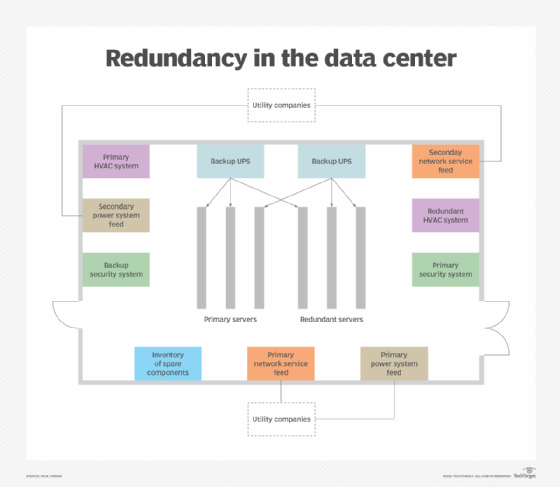Redundancy Pay If Company Goes Bust: Recognizing Your Entitlements in the UK
Redundancy Pay If Company Goes Bust: Recognizing Your Entitlements in the UK
Blog Article
Checking Out the Interaction Between Company Redundancy and Organizational Adaptability for Future Development
In the vibrant landscape of today's company world, the detailed connection in between firm redundancy and business versatility emerges as an important aspect for sustained development and success. Business usually encounter the challenge of striking a delicate balance in between keeping a level of redundancy to reduce dangers and promoting versatility to respond promptly to the ever-evolving market needs.
Significance of Company Redundancy
Business redundancy is a critical element that boosts organizational durability and reduces functional risks. By including redundancy actions within the organizational structure, firms can better endure unexpected disturbances and changes in the organization atmosphere. Redundancy acts as a tactical barrier, permitting companies to adjust and react successfully to unforeseen obstacles without compromising important procedures.
One trick aspect of the importance of firm redundancy is its function in ensuring continuity throughout times of situation. When confronted with sudden adjustments or emergency situations, redundant systems, resources, or workers can step in to maintain crucial features and prevent extensive interruptions. This connection not just safeguards the company's online reputation and consumer count on yet additionally reduces monetary losses and functional downtime.

Methods for Organizational Versatility

An additional critical technique is buying innovation and facilities that can support versatility and scalability. Executing digital devices, automation, and data analytics can enhance procedures, improve performance, and provide beneficial insights for educated decision-making. Furthermore, developing adaptable organizational frameworks that enable fast adjustments to market characteristics and consumer needs is vital for staying affordable in a quickly advancing environment. By proactively identifying prospective interruptions and opportunities, organizations can proactively prosper and adjust in an ever-changing organization landscape.
Balancing Redundancy and Flexibility
Accomplishing an unified stability in between operational redundancy and business adaptability is vital in navigating the complexities of a vibrant business environment. Redundancy within a firm offers a safeguard, making certain continuity and stability in procedures. Nevertheless, an extra of redundancy can result in ineffectiveness and hinder adaptability to changing market conditions. On the various other hand, organizational flexibility allows companies to respond without delay to external disturbances and seize brand-new chances. Striking the appropriate equilibrium between redundancy and versatility is a fragile process that needs a deep understanding of the company's goals, market characteristics, and risk tolerance.
To accomplish this equilibrium, firms need to conduct regular evaluations of their procedures to identify areas where redundancy is necessary for risk reduction and where versatility can drive innovation and growth. Implementing versatile structures, fostering a culture of continual learning and enhancement, and encouraging open communication throughout all degrees of the company are crucial strategies to balance redundancy and versatility properly. By aligning these 2 essential aspects, business can place themselves for sustainable growth and success in an ever-changing organization landscape.
Instance Research Studies on Adjustment Success
In checking out circumstances of successful business adjustment, it becomes apparent that the interaction in between operational redundancy and flexibility is a specifying consider shaping resilient businesses. One compelling study is that of Netflix. Initially a DVD rental solution, Netflix demonstrated impressive adaptability by see here now transitioning right into a streaming platform check here when digitalization disrupted the market. By purposefully purchasing innovation and content development, Netflix not just thrived but made it through in a swiftly progressing market. Another standout example is Amazon. Starting as an on-line book shop, Amazon continually adjusted its business model, broadening into diverse markets such as cloud computing and expert system. This flexibility allowed Amazon to stay in advance of rivals and meet transforming customer demands. Lastly, Adobe gives a notable image of successful adjustment. The firm changed from offering software program licenses to a subscription-based model, making certain repeating revenue streams and improved customer interaction. These study underscore the relevance of operational redundancy combined with business adaptability in fostering lasting development and competitiveness.
Structure Durability for Future Growth
Structure strength for future development needs a calculated positioning of functional processes with market dynamics and emerging patterns. Companies must adjust to changing environments by promoting a culture of flexibility, development, and continual renovation. Resilience includes not only getting better from troubles but likewise proactively planning for future difficulties. One crucial facet of building durability is buying durable threat management approaches to mitigate prospective disturbances. This includes scenario preparation, diversifying supply chains, and creating contingency strategies for different backups (who pays redundancy money).
Additionally, fostering strong connections with stakeholders, such as customers, workers, distributors, and the neighborhood, is crucial for weathering unpredictabilities and preserving trust fund and support throughout stormy times. Reliable interaction and openness play an essential duty in building durability, as they aid straighten assumptions and help with cooperation in navigating unpredictabilities.
Moreover, companies need to focus on knowing and advancement initiatives to upskill staff members and furnish them with the essential devices to adapt to changing circumstances. By buying their workforce, companies can boost their adaptability and dexterity, ultimately reinforcing their strength for lasting future growth.
Verdict

In the dynamic landscape of today's company globe, the intricate relationship between firm redundancy and business adaptability arises as a critical factor for sustained growth and success. Firms usually encounter the challenge of striking a delicate equilibrium between preserving a level of redundancy to alleviate threats and promoting versatility to respond promptly to the ever-evolving market needs.To accomplish this balance, business need to conduct regular assessments of their operations to determine areas where redundancy is required for danger reduction and where flexibility can drive innovation and development.In conclusion, the interaction between business redundancy and organizational adaptability is vital for future growth. Building durability via a mix of redundancy and flexibility will make certain that companies are prepared for the difficulties of the future.
Report this page